| |
That banjo music you hear? Celebrate it in Oklahoma City
By Tom Adkinson
July 28, 2023
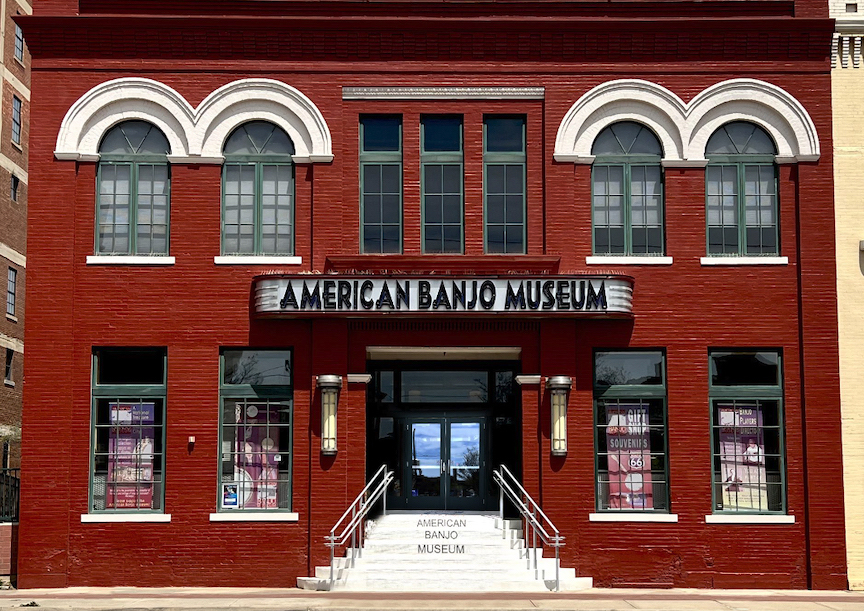
The American Banjo Museum is a fixture in the Bricktown area of Oklahoma City. It opened in Guthrie, Okla., in 1998 and moved to Oklahoma City in 2009. Image by American Banjo Museum
|
OKLAHOMA CITY – For many people, their knowledge of banjo music starts with “Foggy Mountain Breakdown” in the “Bonnie and Clyde” movie and ends with “Dueling Banjos” in the “Deliverance” movie, with the possible addition of the theme from “The Beverly Hillbillies” on television.
That’s a shame, because the depth and breadth of the banjo’s presence in American music and culture is significant. The American Banjo Museum in Oklahoma City tells the full story.
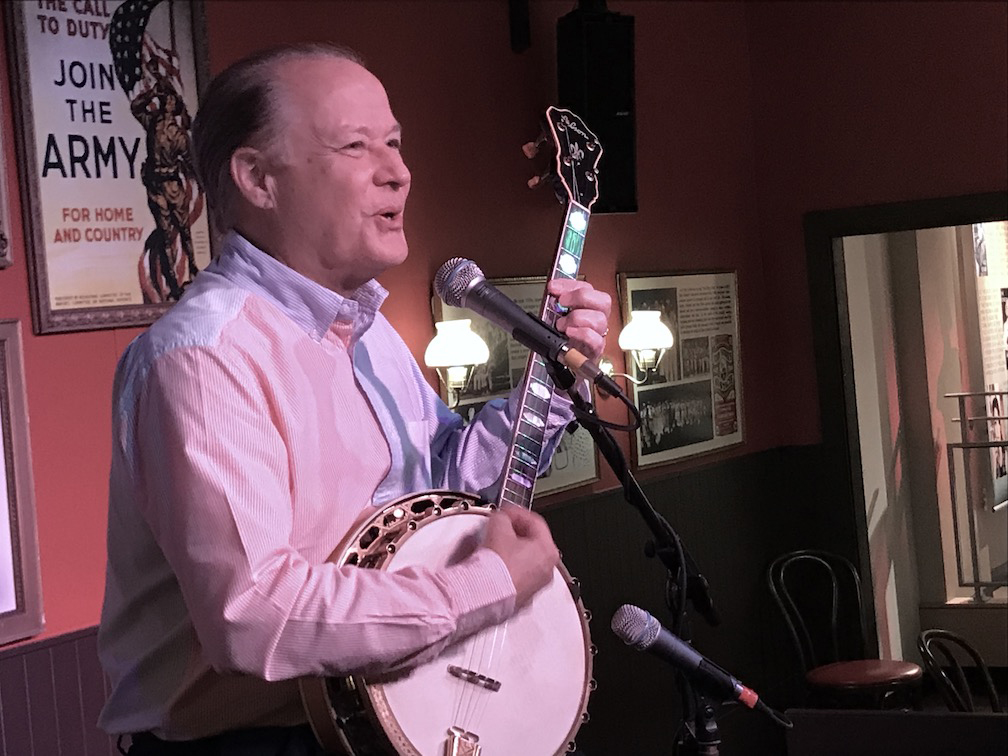
Johnny Baier, executive director of the American Banjo Museum, is an accomplished performer and often entertains museum group tours. Image by Tom Adkinson
|
“Our mission is to introduce the banjo to people who are not familiar with it,” was the casual description executive director Johnny Baier gave of the non-profit museum founded in 1998 in Guthrie, Okla., and relocated to Oklahoma City’s Bricktown area in 2009.
A more formal mission statement says the goal is “to preserve and promote the banjo while expanding appreciation and understanding of its history and music.”
The unmistakable sound of the banjo – whether it’s in bluegrass, jazz, folk, country, Americana or other styles of music – has depth as well as resonance.
The 4- or 5-string instrument we know today had its start in the culture of enslaved Africans in the Caribbean and the colonies that would become the United States. Written mentions of the instrument appear in documents from the 1600s and 1700s, with one dating to 1621.
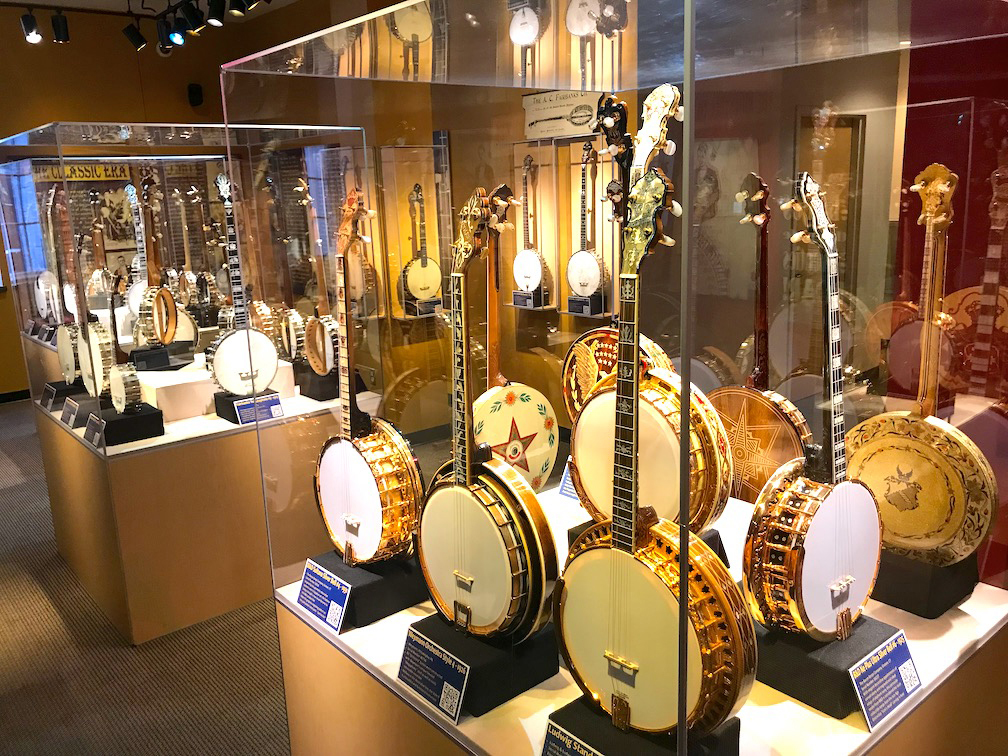
The American Banjo Museum displays more than 300 of the approximately 400 instruments it owns. The oldest was built in 1845. Image by Tom Adkinson
|
Early banjos featured a gourd body and a wooden stick neck. The earliest art depiction is in a watercolor of a group of enslaved people painted sometime between 1785 and 1795. That painting is at the Abby Aldrich Rockefeller Folk Art Museum in Williamsburg, Va.
Of the approximately 400 banjos the American Banjo Museum owns, the oldest is a fretless instrument that William Boucher built in 1845 in Baltimore. Boucher, a drum maker and instrument dealer, was the first commercial maker of banjos. The museum’s is one of only 40 he is known to have made.
You may find references to Joel Walker Sweeney as the inventor of the banjo in the early 1800s, but that’s clearly not accurate. However, what Sweeney did was take the concept of the gourd instruments he heard enslaved people play in rural southern Virginia and developed the basic modern 5-string banjo with a skin head and a neck with frets.
Sweeney and three siblings became leaders in developing minstrel music in America. Minstrel shows, with all of their stereotypes, became hugely popular, and the Sweeneys even toured in Europe.
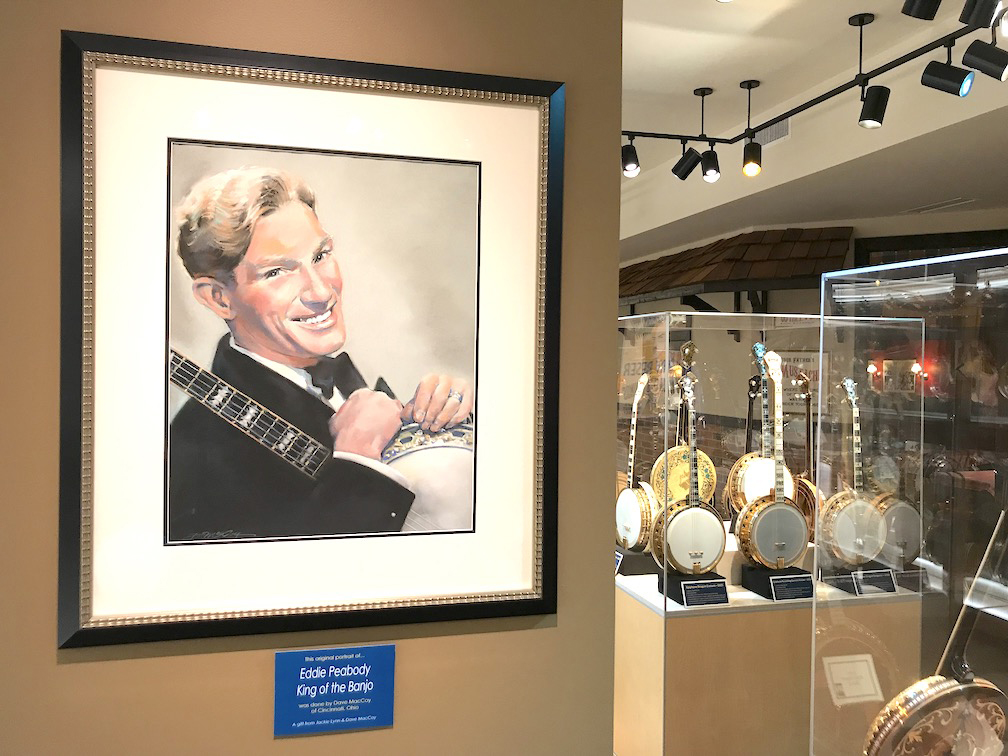
Eddie Peabody, whose career spanned five decades, earned the nickname of “King of the Banjo.” He once had a three-year signing bonus of $1 million. Image by Tom Adkinson
|
The banjo is versatile enough that it didn’t get trapped in the minstrel show world. It was key to the jazz explosion in the early 1900s. The banjo museum’s Baier cites Eddie Peabody, dubbed “The King of the Banjo,” as an example of the banjo’s popularity.
“Eddie Peabody signed a $1 million signing bonus for a three-year performance contract – plus his $50,000 annual salary – in 1928,” Baier said.
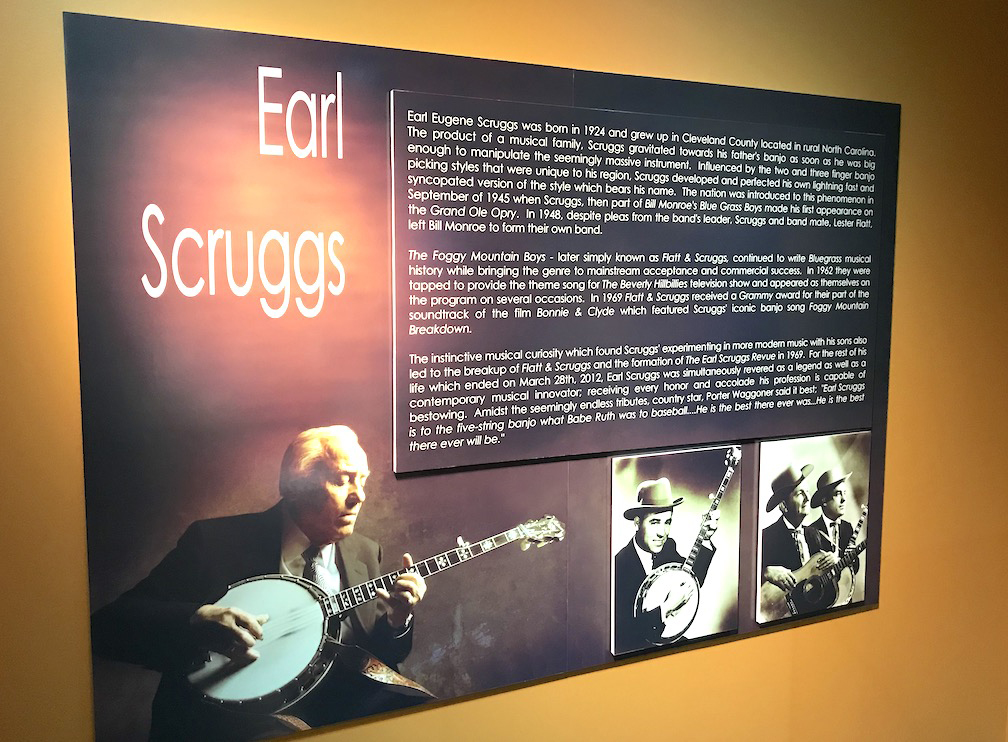
Earl Scruggs, famously of the landmark bluegrass duo of Flatt & Scruggs, is one banjo picker many people could identify. Image by Tom Adkinson
|
The banjo’s Jazz Age popularity gave way to popularity in bluegrass, country and folk music, and you’ll hear banjo music in rock, pop and even hip-hop. Consider artists through the years such as Grandpa Jones, Earl Scruggs, the Smothers Brothers, Steve Martin, Bela Fleck and, yes, Jay-Z, who used banjo samples in “99 Problems.”
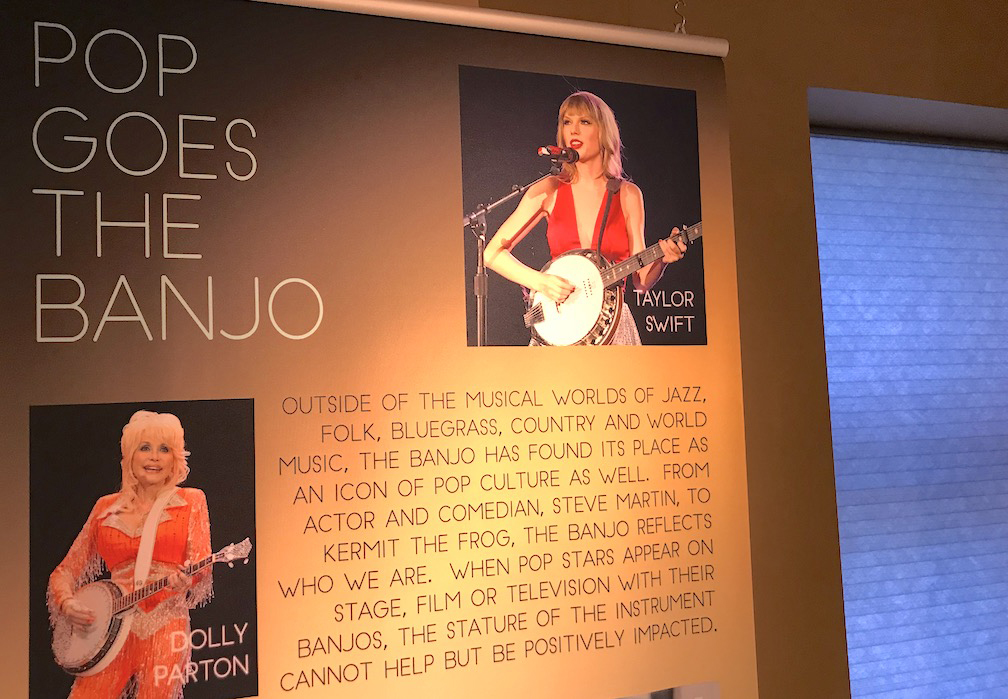
Dolly Parton and Taylor Swift are two contemporary artists who know how to strum a banjo to show their performance versatility. Image by Tom Adkinson
|
While performances are not a regular part of visits to the American Banjo Museum, watch the museum’s calendar for jams and special events. A real bonus is to chance into a performance/lesson with Lucas Ross.
Ross, an Oklahoma City TV celebrity, entertainer, comedian and banjo museum staffer, offers occasional free programs strictly for first-time banjo players. Five or six lucky people get to learn banjo basics and discover why serious banjo players have callouses on the fingers of their left hand.
Trip-planning resources: AmericanBanjoMuseum.com and VisitOKC.com
|



